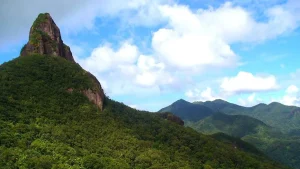Municipality of Villa de San Antonio
Villa de San Antonio is a municipality in the department of Comayagua in Honduras.
Villa de San Antonio was founded in 1537 by Licenciado Antonio Navias Bolaños, the same year as the nearby city of Santa María de la Nueva Valladolid de Comayagua. The design of the old town, with its Spanish-style layout of streets, squares, and lots, is so picturesque and striking that it is said that this place was intended to be the capital. However, they did not find sufficient construction materials, especially quarry stone.
The quarry stone was found on the right bank of the mighty Humuya River near Comayagua. It is known that the municipality of Villa de San Antonio is older than Comayagua by 13 years. Its original name was «San Antonio del Valle,» and it was later called «Villa de San Antonio.» It is said that the first settlers of the foundation were a mixture of Spanish, Indigenous, and African people.
The design of the old town, with its Spanish-style layout of streets, squares, and lots, is so picturesque and striking that it is said that this place was intended to be the capital. However, they did not find sufficient construction materials, especially quarry stone. The quarry stone was found on the right bank of the mighty Humuya River near Comayagua.
It is said that the first settlers of the foundation were a mixture of Spanish, Indigenous, and African people.
There are two orphanages in the urban area: Hogar Tierra Santa and Hogar San Antonio, affiliated with the Catholic charity APUFRAN.
In the year 1700, Villa de San Antonio had two churches. One parish church was dedicated to San Antonio de Padua. This church preserves high-quality wooden images and canvas paintings, including a magnificent painting of the Virgin of Mercy and the Rosary with gold leaf frames. The main altarpiece, in Baroque style, has excellent carvings. The most important work of art for its artistic quality is a calvary composed of three figures: the Crucified Christ on a mother-of-pearl cross, the San Juan, and the Dolorosa, magnificently carved and gilded, probably by Guatemalan sculptors from the late 17th century and possibly brought in 1683 by Oidor Bolaños. Another church was affiliated with the Mercedarians who were in Cururú, and it is the oldest one.
Data
The municipality consists of an urban area, or main city, and a large number of «aldeas» (villages), with an estimated population ranging from 24,419 in 2015. The town is located 20 minutes by car from the municipal seats of the departments of Comayagua and La Paz, and 60 minutes from the capital city of Tegucigalpa.
Its main economic activities include agriculture, factory work, and construction. Its territorial extension is 341.20 km2.
The urban area is composed of two kindergartens, two primary schools, and a middle and polyvalent education institute, where students can pursue academic degrees in science and humanities or technical degrees in computing (liberal arts) or commercial education.
There are two orphanages in the urban area, Hogar Tierra Santa and Hogar San Antonio, affiliated with the Catholic charity APUFRAN. There is a health center staffed by a doctor and two nurses. Recently, a Civil Peace Court has been established to provide social services.
On the northern side, occupying part of the hamlet of Canquigue and the Aldea of Palmerola, which are under the jurisdiction of the municipality, is the Soto Cano Air Base, also known as Palmerola Base. It was built in the 1980s as a North American base during the Cold War. It is currently multi-purpose and is intended to be used for commercial civil aviation.



